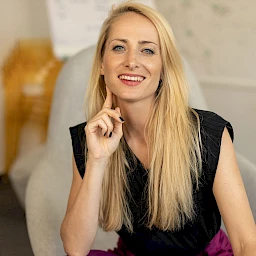The University of Technology Nuremberg (UTN) is rethinking the concept of university study and creating modern hybrid worlds of work for teaching, research and administration on a 37-hectare site in a southern district of Nuremberg. The editorial staff of the IBA Forum visited Thekla Jenny Richter, who heads the Buildings and Infrastructure team of the UTN, in order to find out more about the project.
The UTN is the first state university to be newly established in Bavaria since 1978. It started its programme of studies in the autumn of 2023. It is temporarily housed in The Plant, a rented external space in which the New Work and New Learn concepts are being tested in real-life operation. In parallel, flexible worlds of work for teaching, research and administration, as well as facilities for up to 6,000 students, are being built on a 37-hectare site, the former Südbahnhof (South Railway Station), in a new urban neighbourhood in a southern district of Nuremberg. The concept envisions a networked, urban and sustainable campus that is largely powered by renewable forms of energy and aims to attract not only university institutions but also start-up companies and research institutes.
On the way to new forms of learning
Lots of glass, lots of green spaces — that’s what the UTN buildings will look like. Even before the first students come to the campus, it’s already clear that the UTN is a special place. Instead of traditional faculties, it has departments modelled along the lines of American universities, where interdisciplinary teaching and research is already a reality. Because of the UTN’s international orientation, courses are conducted in English, and digitally supported teaching also plays an important role. One unusual feature is the teacher-to-student ratio of one professor to 30 students. Another milestone is the fact that the UTN is a university without any lecture halls. The teaching is hybrid in nature, in line with the “inverted classroom” concept. In this type of teaching, the students independently work through digital learning units that have been prepared by the instructors. At a later stage, the content of the units is investigated in greater depth by small groups at in-person meetings on the UTN campus. This is a concept that requires new work environments and greater flexibility in terms of spaces, equipment and infrastructure.
Cube One is the first administrative and subject-area building that will go into operation on the UTN campus by mid-2024. The six-story wood-hybrid building, which conforms to the Passivhaus standard, is shaped like a cube and has a core made of recycled concrete that absorbs the static forces at its centre. In a second construction phase, the UTN main buildings will be constructed in the northern part of the campus: the headquarters building, the subject-area departments, a large hall for events, the cafeteria and the Welcome Centre. Here flexible spatial concepts will be embedded in an urban, car-free and lively environment in the immediate vicinity of the popular Dutzendteich local recreational area. Public green spaces, squares, pocket parks and green niches will characterise the campus. In the process, a modern and innovative environment for learning and teaching will be created.

Searching for tomorrow and the day after
Until the new UTN campus can be occupied, employees, instructors and students are being accommodated in a rented interim area called The Plant, a former shoe factory. These spaces are a test environment, and more or less a real-life laboratory, for the future office, teaching and learning spaces on the new UTN campus. The work zones are divided into the three areas Concentration, Collaboration and Communication. Office areas conforming to certain rules and equipped with the corresponding furniture are assigned to each work zone. The principle of flat hierarchies is implemented at the UTN. Traditional single-occupant offices are a thing of the past. The Chancellor of the UTN also has his workstation in the Open Space area.
New Work for research and teaching
In the Open Space, each team receives a home base that is equipped with six connected workstations. Here the desk-sharing principle is applied. All of the users have access to state-of-the-art equipment such as mobile surface hubs and whiteboards. As a result, every team can do concentrated work on a complex of topics, either individually or together. “As a public institution, we want to create work environments that promote flexible use, team cohesion and communication,” says Thekla Jenny Richter, the head of the Buildings and Infrastructure team at the UTN. “Flex rooms” that can be reserved as needed are available for collaboration. They are especially suitable for small meetings, seminars, colloquia and hybrid events, but they are furnished so flexibly that they can also be used for (hybrid) focused work, either by individuals or groups. What’s special about the “flex rooms” is that they are furnished with seating units of various heights. This loosens up conversations and makes it possible for people to communicate at eye level.
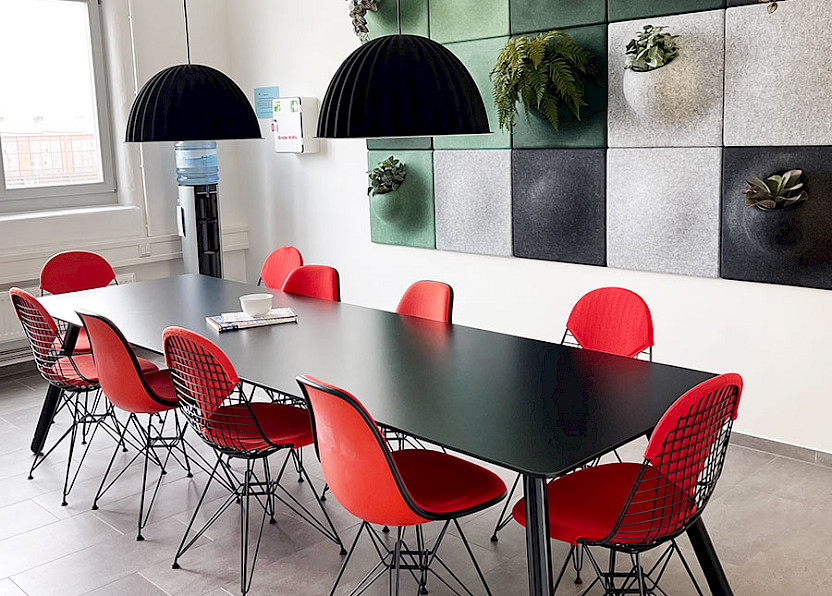
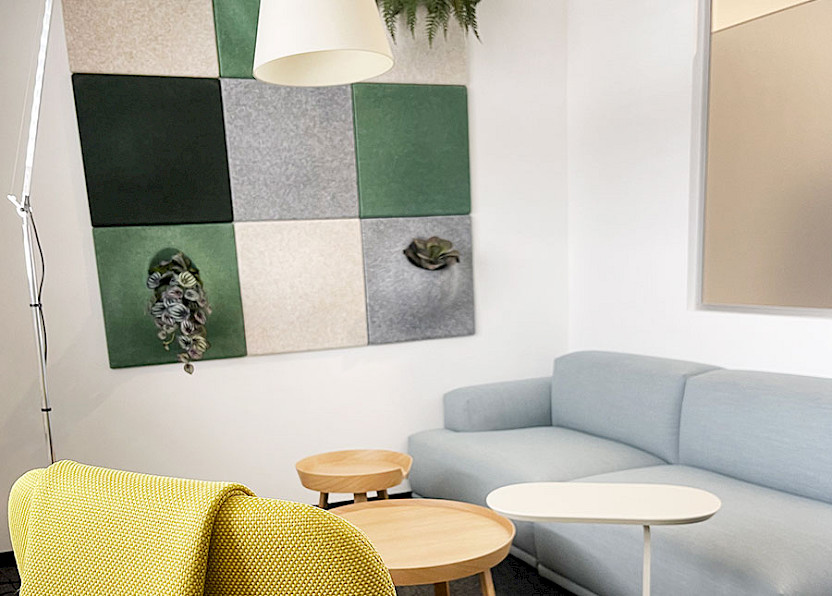
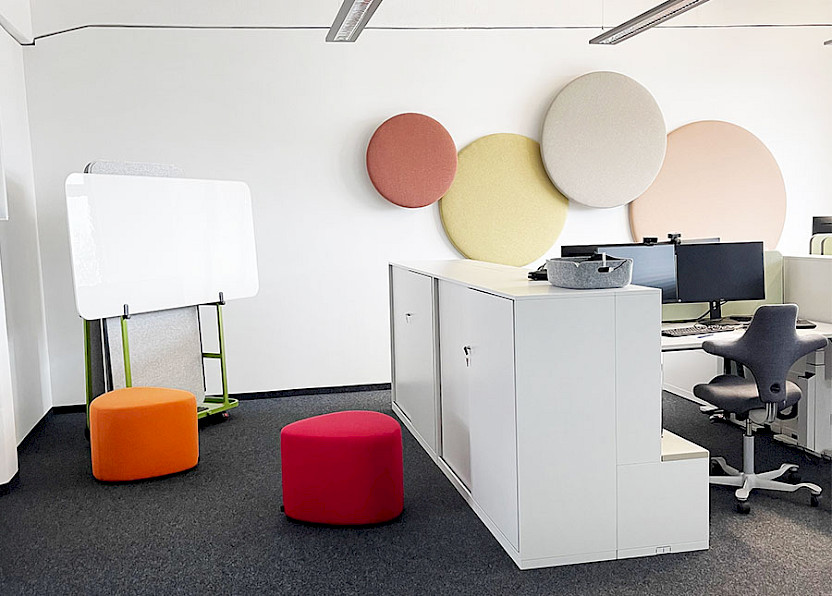
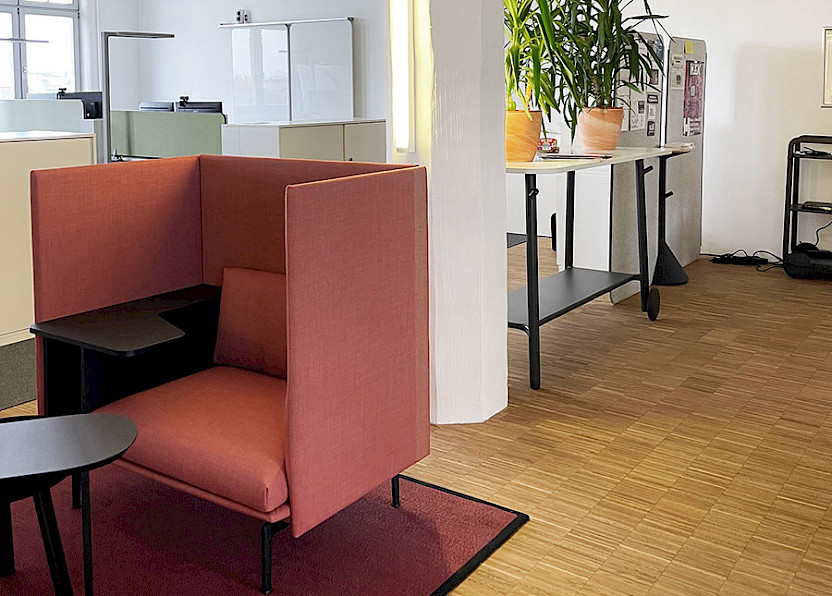
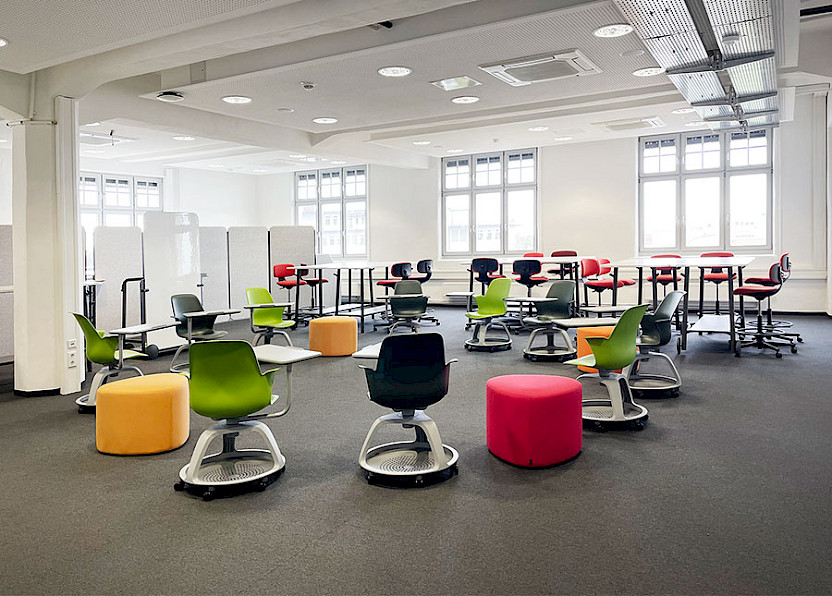
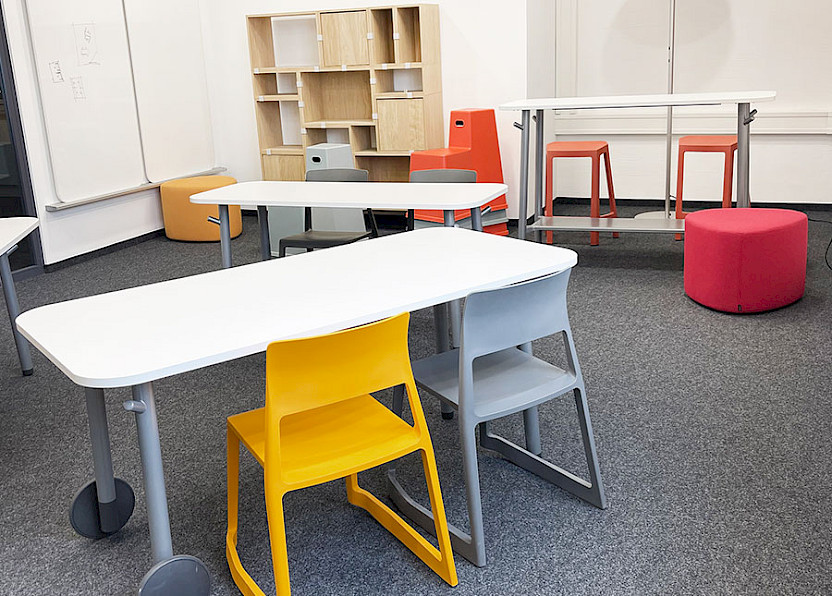
Individuals’ mandatory presence in the office is just as flexible as the utilisation of the rooms. On average, the UTN employees work at home two days a week and at the office on the other days. However, this requirement can also be fulfilled differently by agreement with the individual’s direct supervisor. This is hybrid work in its purest form, in line with the values of UTN. Digitalisation, networking, internationality, flexibility and adaptability are not mere concepts on paper. They are implemented daily in the participants’ everyday work.
Please also read
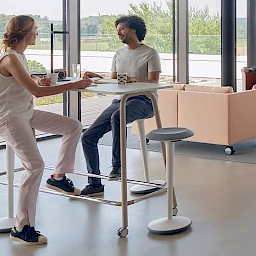
The UTN is a new University of Technology that is currently being established in Nuremberg. It was founded on 1 January 2021 by the Free State of Bavaria. Teaching and research operations have been developed since then. In addition, a completely new university campus is being constructed on an area of 37.5 hectares in the Lichtenreuth district of Nuremberg. You can find further information at: https://www.utn.de/.
Cover photo: Gustav Epple Bauunternehmung mit a+r Architekten / Rendering moka-studio
Photo Campus Grüne Mitte: Ferdinand Heide Architekt/TOPOS Stadtplanung Landschaftsplanung Stadtforschung
Fotos: Aura




